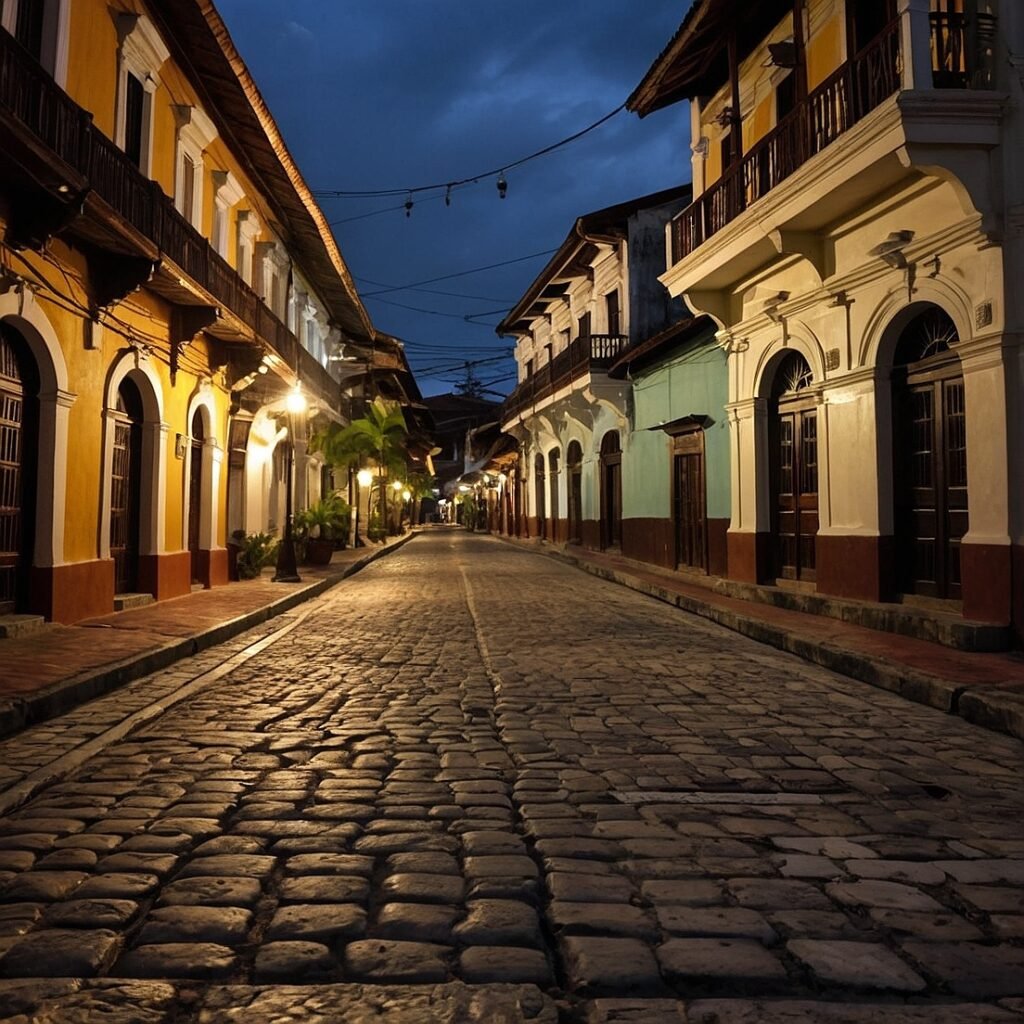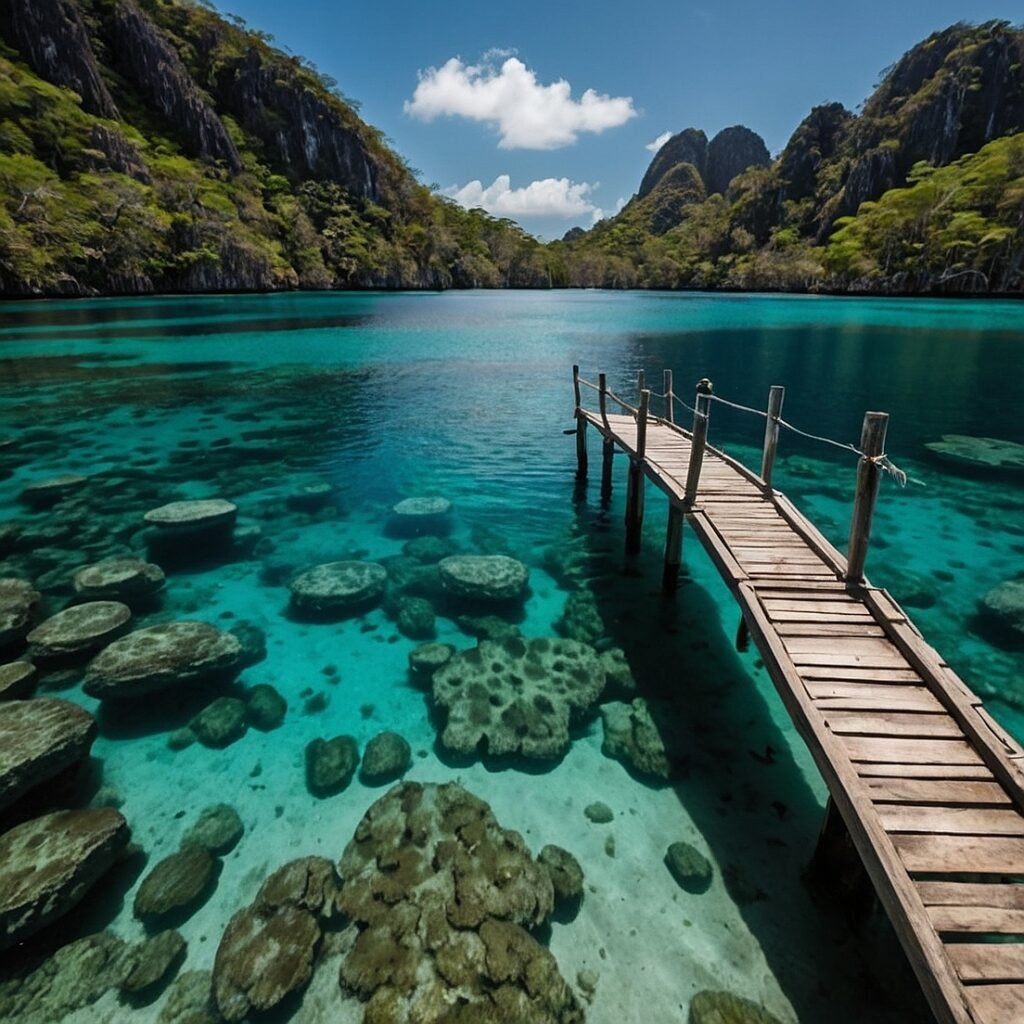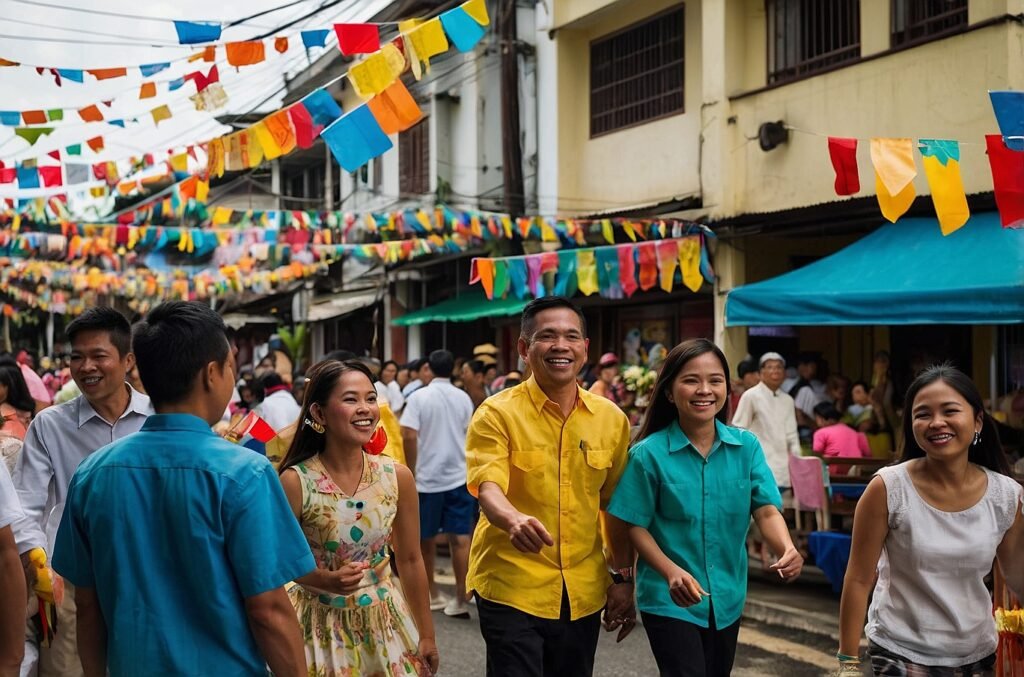Nestled in the northwestern coast of Luzon, Philippines, lies the historic city of Vigan, a testament to the country’s rich colonial past and a living museum of Spanish-era architecture and culture. Recognized as a UNESCO World Heritage Site in 1999, Vigan stands as one of the best-preserved examples of a planned Spanish colonial town in Asia. This remarkable city offers visitors a unique glimpse into the Philippines’ complex history, showcasing a harmonious blend of Asian building design and construction with European colonial architecture and planning. The well-preserved state of Vigan’s historic core, coupled with its cultural significance, has made it a popular destination for both domestic and international tourists seeking to immerse themselves in the Philippines’ colonial heritage. This blog will delve into the various aspects that make Vigan a truly exceptional place, from its historical significance and architectural marvels to its cultural traditions and modern-day attractions.
Historical Background
Pre-colonial Era
Long before the arrival of Spanish colonizers, the area where Vigan now stands was already a thriving settlement. Archaeological evidence suggests that the region was inhabited as early as 2500 BC. The original inhabitants of the area were the Ilocano people, who had established a trading post along the Mestizo River. This strategic location allowed them to engage in commerce with Chinese merchants and other neighboring communities.
Spanish Colonial Period
The history of Vigan as we know it today began with the arrival of the Spanish conquistadors in the 16th century. In 1572, Juan de Salcedo, a Spanish explorer and conquistador, founded the city as a settlement. He named it “Villa Fernandina” in honor of King Philip II’s son, Prince Ferdinand. The city quickly grew in importance due to its strategic location for trade and its role as an administrative center for the Spanish colonial government.
During the Spanish colonial period, Vigan flourished as a center of commerce and culture. The city’s layout was designed according to the Spanish urban planning concept known as “Law of the Indies,” which specified a grid pattern centered around a main plaza. This urban plan, combined with the architectural style of the buildings, gave Vigan its distinctive character that has been preserved to this day.
Post-colonial Era
After the Philippines gained independence from Spain in 1898, Vigan continued to play an important role in the region’s economy and culture. However, like many historic cities, it faced challenges in preserving its architectural heritage in the face of modernization. It wasn’t until the latter part of the 20th century that concerted efforts were made to protect and restore Vigan’s historic core.
In 1999, UNESCO recognized the outstanding universal value of Vigan by inscribing it on the World Heritage List. This designation has helped to raise awareness about the importance of preserving the city’s unique cultural landscape and has contributed to the development of sustainable tourism in the area.
Architectural Marvels
Bahay na Bato
One of the most distinctive features of Vigan’s architecture is the “Bahay na Bato” or “House of Stone.” These structures, which are actually a combination of wood and stone, represent a unique fusion of Chinese, Spanish, and Filipino architectural elements. The typical Bahay na Bato in Vigan consists of a ground floor made of brick or stone, with an upper floor constructed of wood. This design was developed to withstand the tropical climate and potential natural disasters such as earthquakes.
Key features of the Bahay na Bato include:
- Large windows with capiz shell panes
- Sliding wooden panels (ventanillas) below the windows
- Steep roofs with overhanging eaves
- Interior courtyards for ventilation and light
Calle Crisologo
The heart of Vigan’s historic district is Calle Crisologo, a cobblestone street lined with well-preserved Spanish colonial houses. This street, which stretches for about 500 meters, offers visitors a picturesque journey back in time. The buildings along Calle Crisologo showcase the typical architectural features of the Bahay na Bato, creating a harmonious and visually striking streetscape.
Notable Buildings
Several buildings in Vigan stand out for their historical and architectural significance:
- St. Paul’s Metropolitan Cathedral: Built in 1790, this Baroque-style church dominates Vigan’s central plaza and serves as the seat of the Roman Catholic Archdiocese of Nueva Segovia.
- Syquia Mansion: Once the residence of Elpidio Quirino, the sixth President of the Philippines, this mansion now serves as a museum showcasing period furniture and artifacts.
- Burgos Museum: Housed in the ancestral home of national hero Fr. Jose Burgos, this museum offers insights into the life of the martyr priest and the history of Vigan.
- Plaza Salcedo: The main plaza of Vigan, named after the city’s founder, features a dancing fountain and serves as a central gathering place for locals and tourists alike.
Cultural Heritage
Traditions and Festivals
Vigan’s rich cultural heritage is not limited to its architecture; it is also evident in the city’s vibrant traditions and festivals. Some of the most notable cultural events in Vigan include:
- Vigan City Fiesta (January 25): A celebration in honor of the city’s patron saint, St. Paul the Apostle, featuring parades, street dancing, and religious processions.
- Longganisa Festival (January): A festival celebrating Vigan’s famous pork sausage, with cooking competitions and street parties.
- Binatbatan Festival of the Arts (May): A showcase of traditional Ilocano arts and crafts, including the creation of abel Iloko, a traditional woven textile.
Traditional Crafts
Vigan is known for several traditional crafts that have been passed down through generations:
- Abel Iloko: A traditional woven textile made from cotton or silk, known for its intricate patterns and durability.
- Burnay pottery: Large earthenware jars made using a traditional pottery technique introduced by Chinese artisans.
- Woodcarving: Skilled artisans create intricate wooden furniture and decorative items, often incorporating Spanish and Chinese motifs.
UNESCO World Heritage Site Status
In 1999, UNESCO inscribed the Historic City of Vigan on the World Heritage List, recognizing its outstanding universal value. The criteria for inscription were:
- Criterion (ii): Vigan represents a unique fusion of Asian building design and construction with European colonial architecture and planning.
- Criterion (iv): Vigan is an exceptionally intact and well-preserved example of a European trading town in East and Southeast Asia.
The UNESCO inscription covers an area of 17.25 hectares, encompassing the historic core of Vigan. The following table provides an overview of the key aspects of Vigan’s World Heritage status:
| Aspect | Details |
|---|---|
| Year of Inscription | 1999 |
| Criteria | (ii), (iv) |
| Property Area | 17.25 hectares |
| Buffer Zone | 17.25 hectares |
| Managing Authority | City Government of Vigan |
The inscription has played a crucial role in the preservation and promotion of Vigan’s heritage. It has led to increased awareness of the city’s historical significance, both nationally and internationally, and has contributed to the development of sustainable tourism practices.
Conservation Efforts and Challenges
Preservation Initiatives
The City Government of Vigan, in collaboration with various stakeholders, has implemented several initiatives to preserve the city’s heritage:
- Vigan Conservation Complex: A facility dedicated to the restoration and conservation of historic buildings and artifacts.
- Heritage Conservation Code: A set of regulations governing the preservation and development of properties within the historic core.
- Adaptive Reuse Program: Encouraging the repurposing of historic buildings for modern uses while maintaining their architectural integrity.
- Public-Private Partnerships: Collaborating with private entities to fund restoration projects and promote sustainable tourism.
Challenges
Despite these efforts, Vigan faces several challenges in preserving its heritage:
- Natural disasters: The city is vulnerable to earthquakes and typhoons, which can damage historic structures.
- Urban development pressures: Balancing the need for modern infrastructure with heritage preservation.
- Tourism impact: Managing the influx of visitors to prevent degradation of historic sites.
- Climate change: Rising sea levels and changing weather patterns pose long-term threats to the city’s built heritage.
Tourism and Economic Impact
Vigan’s status as a UNESCO World Heritage Site has significantly boosted its tourism industry, contributing to the local economy and providing employment opportunities. The following graph illustrates the growth in tourist arrivals to Vigan over the past decade:
The tourism sector has had a substantial impact on Vigan’s economy:
- Job creation in hospitality, tour guiding, and related services
- Increased demand for local products and crafts
- Development of tourism-related infrastructure
- Preservation of traditional skills and crafts
However, the city also faces the challenge of managing tourism sustainably to prevent over-commercialization and maintain the authenticity of its cultural heritage.
Modern Vigan: Balancing Preservation and Progress
Urban Planning and Development
Vigan’s city government has implemented strict zoning regulations to protect the historic core while allowing for modern development in other areas. Key initiatives include:
- Traffic management: Restricting vehicle access in the historic core to reduce pollution and vibration damage.
- Utility improvements: Upgrading water, sewage, and electrical systems while minimizing impact on historic structures.
- Sustainable tourism development: Creating visitor facilities and services that complement rather than detract from the historic environment.
Education and Awareness
Recognizing the importance of community involvement in heritage preservation, Vigan has implemented several educational programs:
- Heritage education in schools: Incorporating local history and conservation principles into the curriculum.
- Community workshops: Providing training in traditional crafts and conservation techniques.
- Public awareness campaigns: Promoting the value of heritage preservation among residents and visitors.
Vigan’s Influence on Philippine Heritage Conservation
Vigan’s success in preserving its colonial heritage has had a significant impact on heritage conservation efforts throughout the Philippines:
- Model for other historic cities: Vigan’s conservation strategies have been studied and adapted by other Philippine cities with significant heritage resources.
- Policy development: The experience of Vigan has informed national policies on heritage preservation and sustainable tourism.
- International recognition: Vigan’s UNESCO status has raised the profile of Philippine heritage on the global stage, attracting attention to other potential World Heritage sites in the country.
Future Prospects and Challenges
As Vigan looks to the future, it faces both opportunities and challenges:
Opportunities
- Sustainable tourism development: Leveraging its heritage status to attract responsible, high-value tourism.
- Cultural industries: Further developing traditional crafts and cultural products as economic drivers.
- Knowledge sharing: Positioning Vigan as a center for heritage conservation expertise in Southeast Asia.
Challenges
- Climate change adaptation: Developing strategies to protect heritage resources from the impacts of climate change.
- Balancing modernization and preservation: Continuing to meet the needs of a growing population while maintaining the city’s historic character.
- Funding for conservation: Ensuring long-term financial sustainability for heritage preservation efforts.
Conclusion
Vigan stands as a remarkable testament to the Philippines’ rich colonial history and the potential for heritage preservation to drive sustainable development. Its well-preserved Spanish colonial architecture, vibrant cultural traditions, and successful conservation efforts have earned it a well-deserved place on the UNESCO World Heritage List. As Vigan continues to navigate the challenges of the 21st century, it offers valuable lessons in balancing preservation and progress, sustainable tourism development, and community-based heritage management.
The city’s journey from a colonial outpost to a celebrated World Heritage Site demonstrates the power of cultural heritage to inspire, educate, and contribute to economic development. As Vigan moves forward, its commitment to preserving its unique character while adapting to modern needs will undoubtedly continue to make it a model for heritage cities around the world.
For visitors, Vigan offers a unique opportunity to step back in time and experience the charm of a Spanish colonial town in Asia. From strolling along the cobblestone streets of Calle Crisologo to sampling local delicacies and witnessing traditional craftsmanship, a visit to Vigan is a journey through history and culture that leaves a lasting impression.
As we look to the future, the preservation of sites like Vigan becomes increasingly important. In a rapidly changing world, these living museums serve not only as windows to our past but also as inspiration for creating sustainable, culturally rich communities for generations to come.
Disclaimer: While every effort has been made to ensure the accuracy of the information presented in this blog post, please note that historical facts and statistics may be subject to interpretation and ongoing research. We encourage readers to cross-reference information with official sources and to report any inaccuracies so we can correct them promptly.




